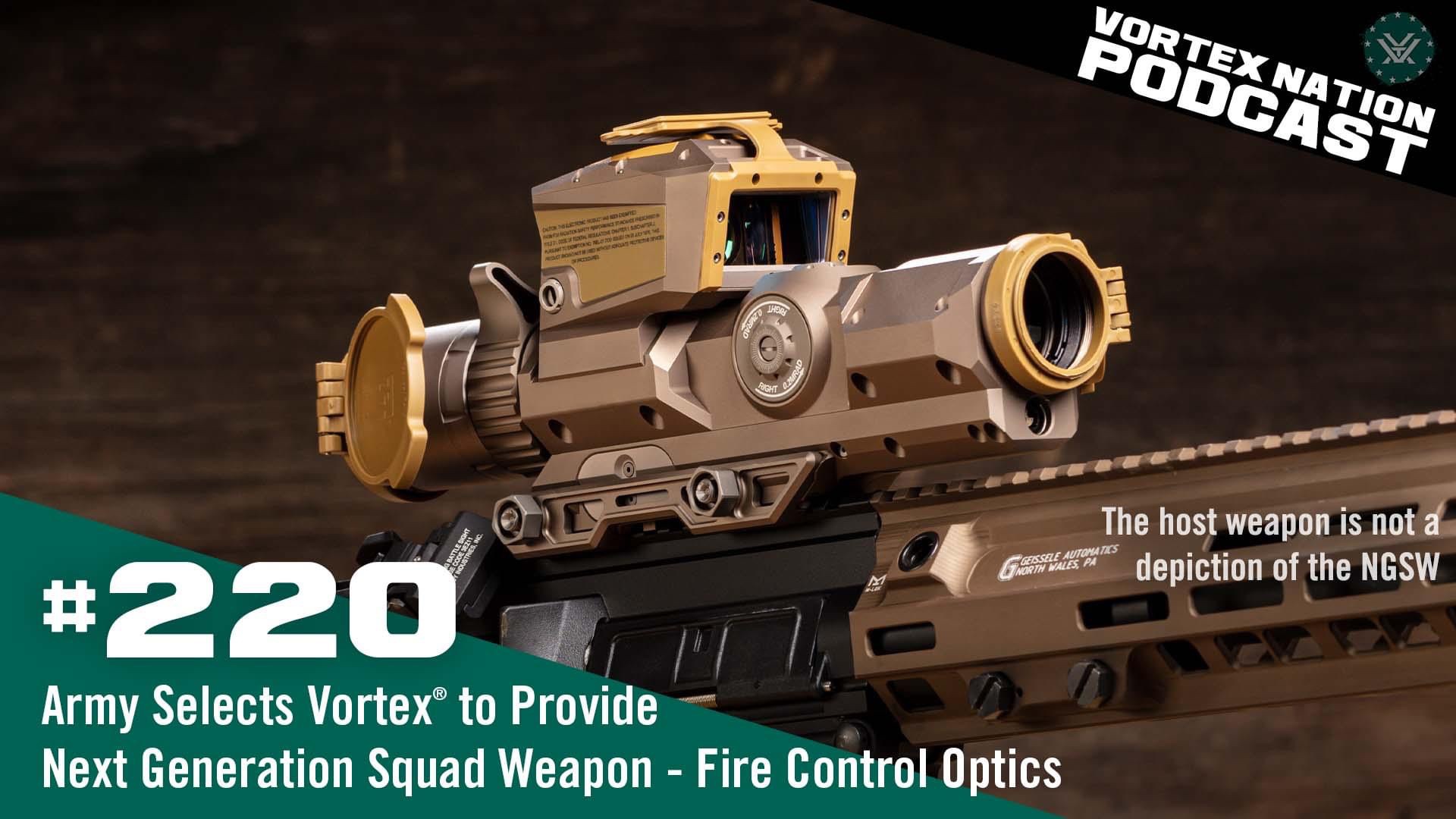
In episode #220 of the Vortex Nation podcast, Alexander Lewis from Vortex’s secret-squirrel sector discusses NGSW-FC and answers these questions:
What is an NGSW-FC? What is Vortex’s new scope replacing? What weapons will it ultimately sit on? What features/capabilities does it have? What is Active Reticle™? What is Intra-Soldier Wireless? How do the features work? With this much tech built in, is it durable? How was it tested? Is it easy to use? Where will the scope be manufactured? What are the overall implications of our nation’s warfighters having this technology in their hands?
Chapters
00:00 – NGSW-FC Intro
08:44 – A Traditional LPVO at its Core
16:22 – Smart Scope Technology
19:43 – The “Active Reticle™” (Rendering)
23:40 – Smart Scope Technology (Continued)
29:07 – Size/Weight
33:08 – Laser Rangefinder (What’s “The Box on Top”?) and Interfaces
42:53 – Battery and Power
44:58 – NGSW-FC Closing Thoughts
Follow Vortex Nation Podcast on Instagram:
www.instagram.com/vortexnationpodcast


If you thought losing an ACOG was bad, you ain’t seen nothing yet.
Going to cost so much it’s going to never leave the arms room.
Not really, cost about the same as new ENVG-B night vision that every soldier is about to be issued. That’s the price of modern high-end electro optics.
First thought this is pretty awesome. It seems sort of incomprehensible that we couldn’t do this 2years ago and now it’s just that easy. Reagan’s Star Wars program comes to mind but I don’t think this is a trick. My second immediate thought is that of the 250000 of these to be built, maybe 25000 make it into the hands of someone who will be trained to use it all. We can’t train the current war fighter in the close combat formations to anywhere near the standard required to make effective use of all this things capabilities. So much of the Army still doesn’t grasp TC 3-22.9. Soldiers don’t know how to Zero. Let’s not get started on MFAL zeros. How well will this work when it’s implementation is “good enough” and not to standard? Some troops will certainly wrap their heads around this quickly but the guy who is barely got a good zero on his Comp M4 is gonna run around with just a $15000 1-8x LVPO. This is not a knock on Vortex or the project idea/program requirements at all. If it’s as good as they say they knocked it out of the park. Maybe further. TRADOC and End users will really have to step up their game and wade deeper into the pool to deliver this capability to the mass formations. I think we are going to own a really great firing solution but will we really be able to leverage it? Not with current training efforts.
I wrote an eloquent response to this but as usual half the comments don’t load. Here it is in a nutshell. Great job Vortex. Really superb if it’s as advertised. Home Run. We wont train the majority of the end users to leverage the tech though. If we can’t get them to standard on simple analog legacy optics like Comp M4, Acog, or the sorta new Sig LVPO; how do we ever think we are going to train them to standard on this? It’s a people problem. We still don’t understand or embrace 3-22.9 as an organization. It would take a manual just as detailed as that to train competency in this optic. How? I still think we should have it though for 20000 end users who are gonna slay it with this thing.
If it is as advertised, this will require LESS training to use effectively at range than legacy optics, not more. A soldier will not need to know their holds, how to range, how to use a Kestrel, etc., because this will do it all for them. It will automatically laser range find, display the range digitally in the reticle, automatically read atmospherics and calculate a ballistic solution, and then will display a digital illuminated dot showing the proper hold. So once this thing is zeroed, the army can hand it to any grunt and just tell them that, absent strong wind, they can just put the illuminated dot on the target and pull the trigger. It thus seems that more soldiers will be able to effectively use this at range than a traditional LPVO, not less.